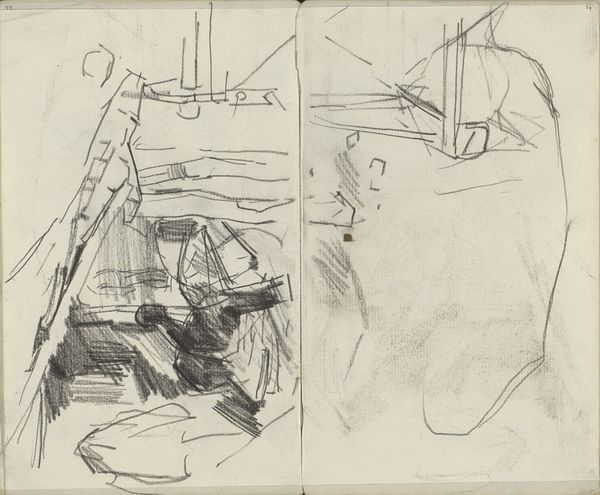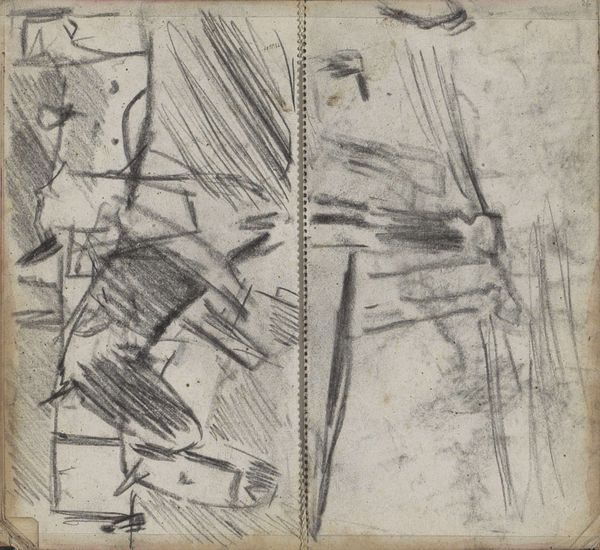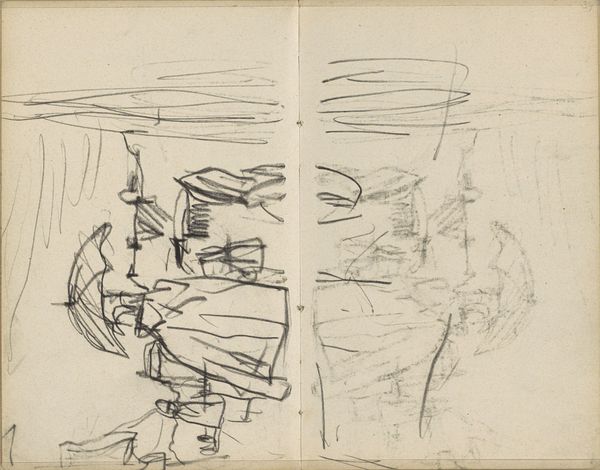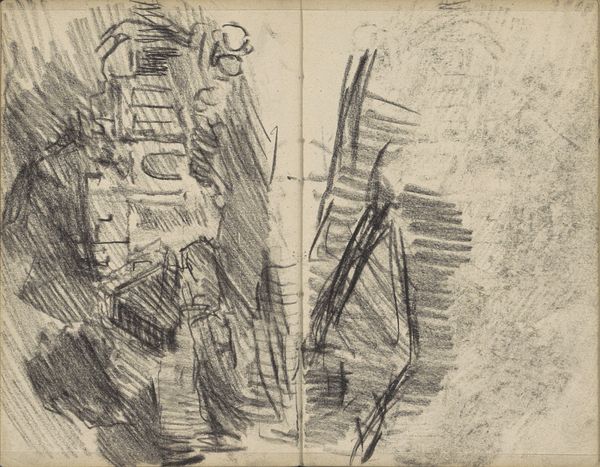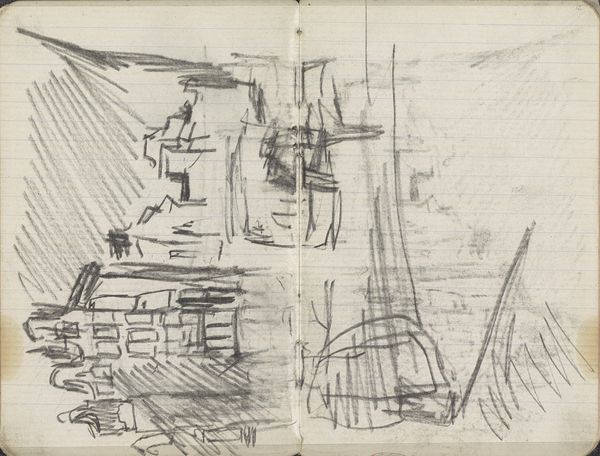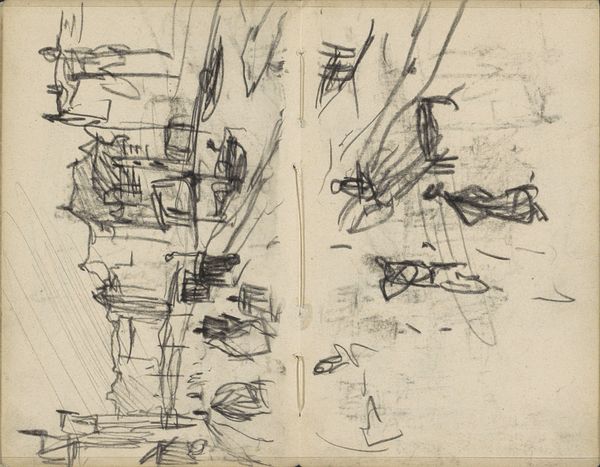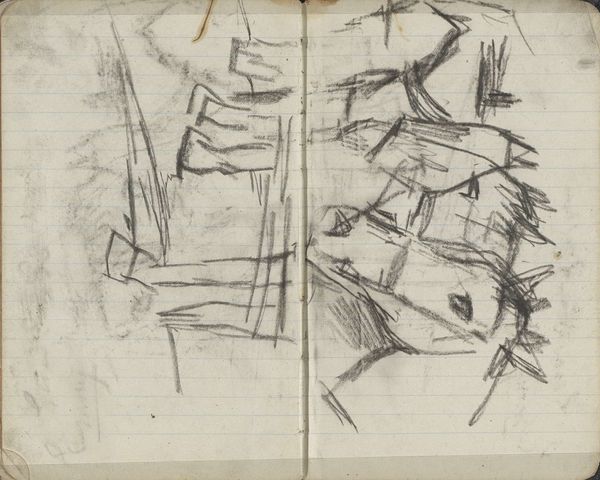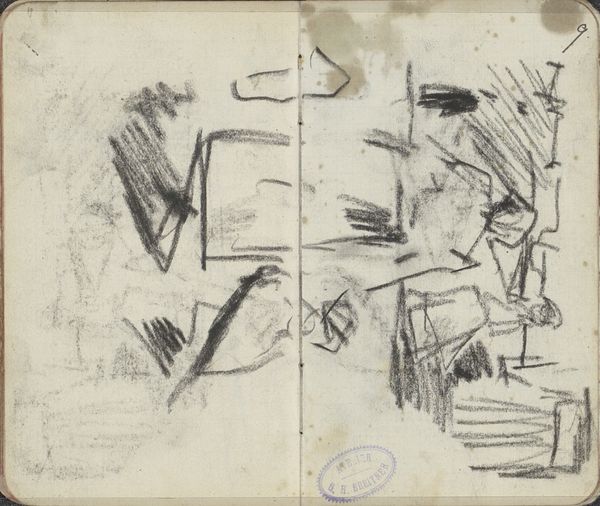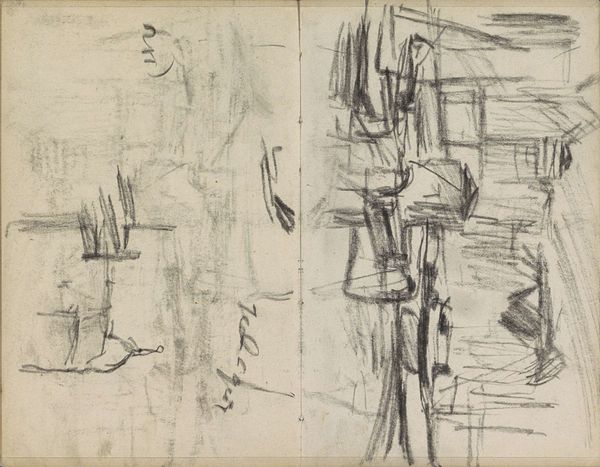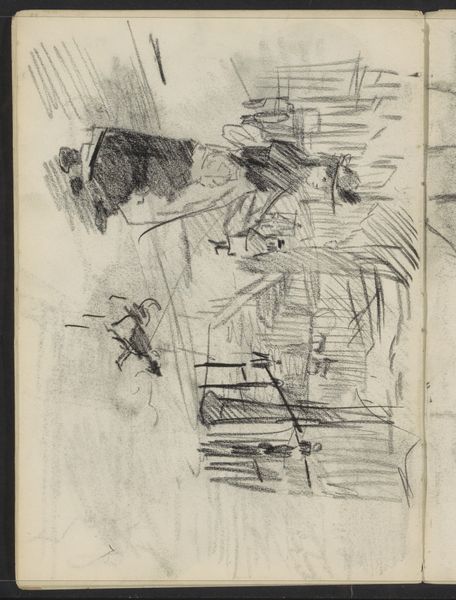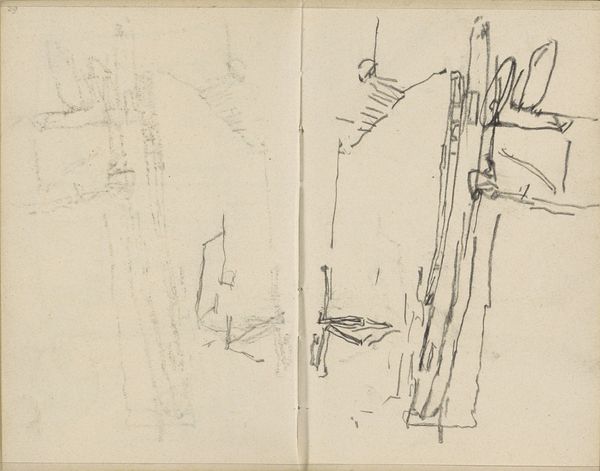
Aangespannen paard, mogelijk op de Dam te Amsterdam 1893 - 1898
0:00
0:00
georgehendrikbreitner
Rijksmuseum
Copyright: Rijks Museum: Open Domain
Curator: We’re looking at a page from George Hendrik Breitner's sketchbook, "Aangespannen paard, mogelijk op de Dam te Amsterdam," made between 1893 and 1898. It appears to be graphite and pencil on paper. Editor: The raw energy in this sketch is immediately striking. You can almost feel the horse's weight, its latent power held in check by the reins and carriage. There is an overall lack of detail yet very evocative. Curator: Precisely. Breitner’s confident application of line and shadow articulate form in a purely structuralist mode. Notice how the minimal shading and cross-hatching give dimensionality without dissolving into representationalism. Editor: It begs the question about artistic intention, doesn't it? This rapid, utilitarian use of the materials speaks volumes about artistic labor, the working-class subject as raw data. There are no attempts to pretty up or conceal. We are in a workshop more than a studio. Curator: Well, his sketchbooks acted as both an observational tool and a testing ground for more formal compositions. I disagree it has nothing to do with representationalism; instead, there is less emphasis on surface detail than there would be for an oil rendering or academic landscape. The dynamism created gives the subject the visual characteristics of life even as we recognize it as just a preliminary study. Editor: Consider the materiality. The graphite allows for easy erasures, quick revisions—a pragmatic medium for someone capturing fleeting urban moments and also cheaper. I can’t help but wonder what this suggests about art-making being made accessible and cheap. Curator: Your reading illuminates how Breitner exploits medium conventions for effect; however, I’m inclined to focus on the semiotic relationship between the viewer and the visible world as presented within this bounded rectangle—the sketch. Editor: Right. It makes you consider how artistic skills become accessible in specific contexts—especially with new mediums being pioneered by the working classes of the time, where affordability becomes key to allowing self-representation and more labor freedom. Curator: Well, it appears that by observing Breitner’s preliminary exploration, both our appreciation for the artist and art historical inquiry were able to advance a little today. Editor: Absolutely, reminding us how even unfinished sketches offer essential insights into labor, materiality, and the socio-economic influences behind creative works.
Comments
No comments
Be the first to comment and join the conversation on the ultimate creative platform.


